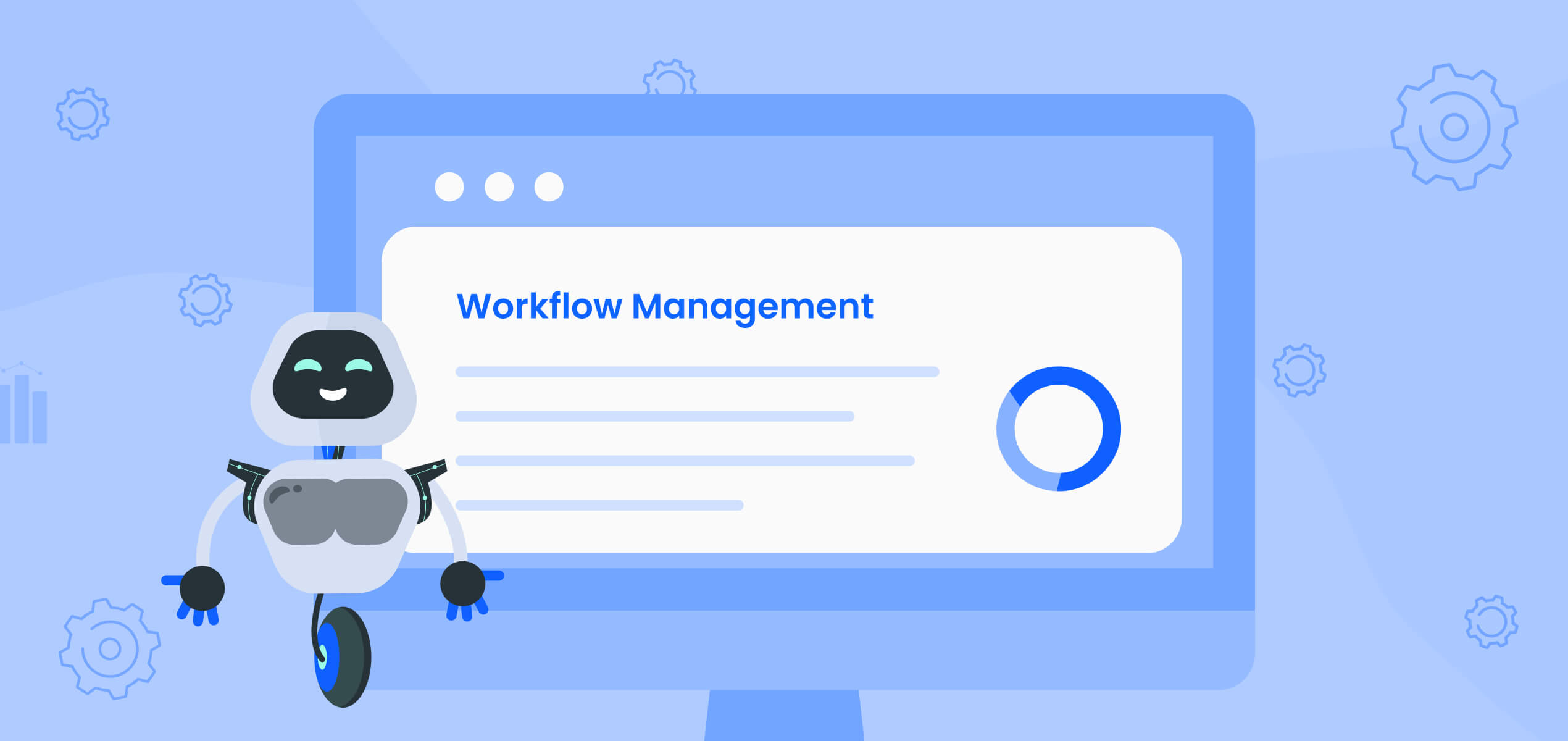- Still typing leads into your CRM, or are you using an automated form?
- Are your customers still waiting on hold, or chatting with an AI bot?
- Still sending generic emails, or are you personalizing messages with AI?
- Are you still tracking inventory by hand, or automating it in real-time?
- Time for automation?
Many businesses are still not taking full advantage of workflow automation. It’s not as complex as it sounds. In fact, this allegedly complex term – ironically – makes life very very easy for organizations.
If you’re at a stage where you know about workflow automation but just haven’t made the switch, clear your calendars, because today is the day. Welcome to your guide on practical inspiration and tips to create an automated workflow for your business.
What is Workflow Automation? [With Example]
A workflow consists of a series of steps needed to complete a task.
With workflow automation, these steps are shifted from human hands to software programs.
So you get from Point A to Point E in your workflow without any human intervention.
Let’s say you collect appointments for your clinic using phone calls and physical forms right now. Your patient has to call multiple times to catch you on the phone, when they do you take down their info, check the Doctor’s calendar, go back and forth on finding the right date-time match, confirm the appointment, input it into your CRM, AND remind them about the appointment. When they arrive, you manually check them in, update their information, and ensure their details are recorded properly.
Now, imagine automating this entire process. Instead of answering calls, patients book appointments directly through an online system linked to an AI powered form software. Their details are automatically captured, and the software checks the doctor’s calendar in real-time to find available slots. The system sends out a confirmation email or SMS with appointment details, and the CRM is updated instantly. When the patient arrives, their information is automatically retrieved, the doctor is updated on their history before they meet, and they’re checked in with a quick scan or click.
The tasks that once required human intervention, like data entry, scheduling, confirmation, and check-ins are now completely automated, allowing your clinic to work smarter, not harder.
Real-World Applications of Workflow Automation
Here are some more examples of how businesses are using workflow automation to drive success. Identify your time-taking tasks or departments below and get inspired to implement workflow automation today:
Human Resources:
- Performance Management: Automate employee performance reviews by collecting feedback, scheduling evaluations, and tracking progress on set goals.
- Time-Off Requests: Automatically process vacation requests by integrating with calendars and updating leave records, reducing the need for manual approval processes.
Sales and Marketing:
- Form Creation and Data Collection: Use an AI-powered form builder to create lead capture forms, surveys, or questionnaires that automatically segregates and
- Lead Scoring: Automatically score and qualify leads based on criteria like engagement, behavior, or demographics.
- Email Campaigns: Automate email marketing campaigns with personalized content and follow-up sequences based on customer behavior or engagement.
Finance:
- Payroll Processing: Automate payroll calculations, deductions, and tax filings to reduce errors and save time on manual payroll administration.
- Budget Approvals: Streamline budget approval workflows by routing requests to the right stakeholders for quick approvals.
Customer Support:
- Ticket Routing: Automatically route customer service tickets to the right department or support agent based on keywords, priority, or customer type to speed up issue resolution.
- Feedback Collection: Automate the collection of customer feedback after service interactions to monitor satisfaction levels and identify areas for improvement.
Operations:
- Inventory Management: Automate stock level monitoring and reorder notifications to prevent stockouts and ensure timely restocking.
- Task Scheduling: Automatically assign tasks to the appropriate employees based on workload and availability.
IT and Security:
- System Monitoring: Use automation to monitor system health, detect vulnerabilities, and trigger alerts for immediate action.
- User Access Management: Automate user access rights and role assignments, ensuring employees have the necessary permissions for their roles without manual intervention.
Legal and Compliance:
- Contract Management: Automate the contract approval process, from drafting to final signatures, reducing delays and improving compliance with legal requirements.
- Compliance Audits: Automate the collection and submission of required documents for audits to ensure timely compliance with regulations.
How To Create a Workflow Automation
Feeling inspired? Awesome. This is a simple starter guide on how to create a workflow automation within your organization right away.
1. Identify Repetitive Processes
First, pinpoint tasks that are repetitive, time-consuming, or error-prone, it could be:
- Employee onboarding
- Invoice approvals
- Customer support ticket routing
2. Map Out the Workflow
Now define each step, including inputs, outputs, decision points, and involved systems or individuals.
3. Choose the Right Tool
Select a workflow automation tool with features like:
- Ease of use (low-code/no-code)
- System integration
- Scalability for growth
4. Test and Optimize
Run lots of tests, gather feedback, and refine the process to ensure it works seamlessly.
5. Train Your Team
Train employees to use the tools effectively
6. Monitor and Improve
Continuously track performance with analytics, optimize workflows, and address bottlenecks.




